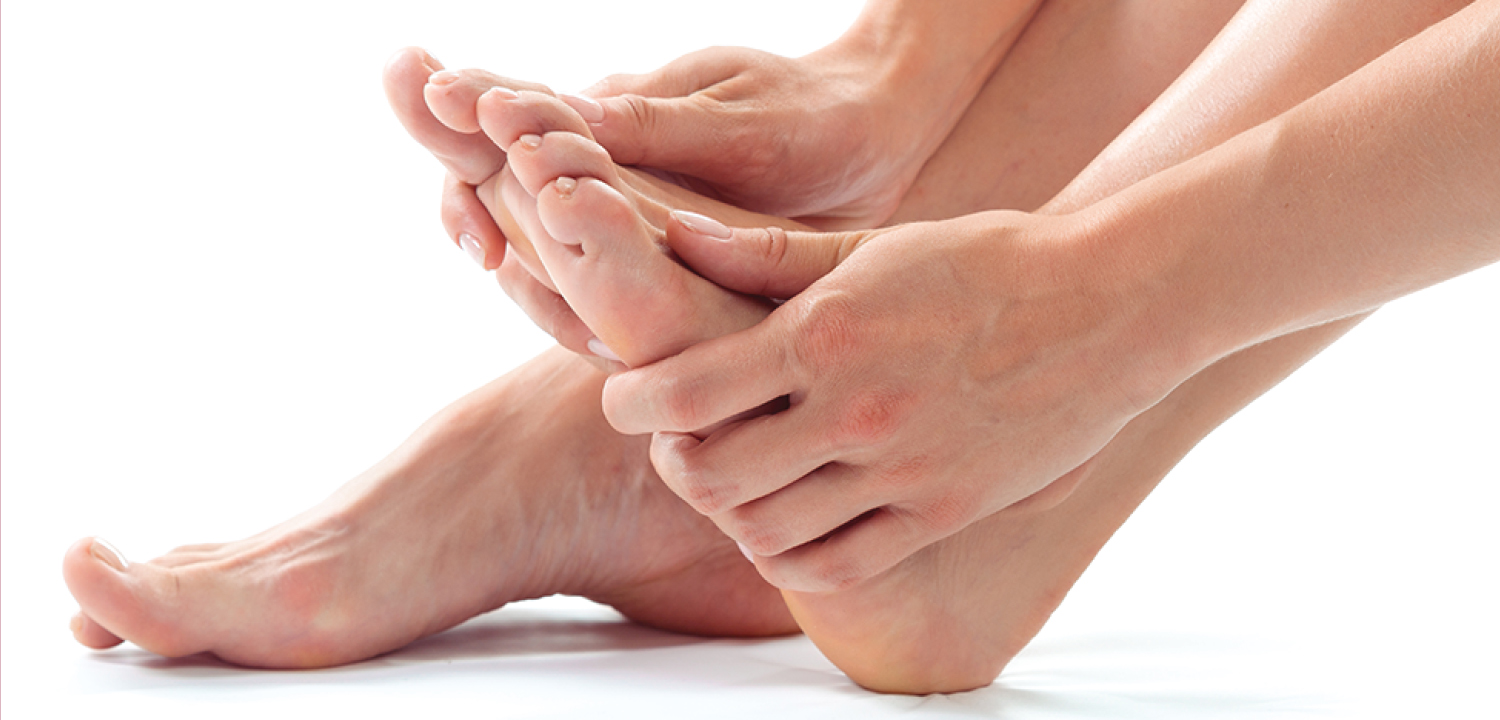

Neuropathy of the Diabetic Foot
Neuropathy is defined as damage to the Nervous System. One of the causes of neuropathy is Diabetes. There are three types of neuropathy that are affected by diabetes. These are; sensory neuropathy, motor neuropathy and autonomic neuropathy. Approximately 50% of diabetic patients suffer from some form of neuropathy in the feet and legs, and they become the most affected. The possible cause of neuropathy in diabetes is that high amounts of sugar in the blood are found for a long period of time and therefore damage the nervous tissue. When blood sugar levels are high, we will also find them in nervous tissue. Sugar within nervous tissue is converted into substances like sorbitol and fructose. These secondary sugar substances accumulate in the nerve, causing inflammation and eventually irrevocable nerve damage.
Sensory neuropathy of the feet initially causes a burning sensation in patients, a sharp pain similar to a knife, pain like pressure on the foot and also mild pains in them. These symptoms can be worse at night. If sensory neuropathy is still in progress, it will eventually lead to total loss of sensation of the feet, causing numbness in the feet. When the protective sensation of pain in the feet subsides, any trauma to the feet will not be painful, and may go unnoticed for a long time. You may not be able to tell the difference between mild and sharp pain like a knife when they are located in the feet. You can do the pin prick test yourself and compare the sensation between the foot and the thigh. If there is a difference, you should let your doctor know at your next visit. Decreased sensation in the feet can have a significant impact on prognosis in patients with diabetic foot disease. Normally in people without neuropathy, if the feet are uncomfortable, the protective sensation of pain will change the way they walk. However, if you lose the sensation of pain, stepping on a nail or piece of glass can go unnoticed for a long time.
Motor neuropathy is damaged nerve system that controls muscles and tendons are called motor nerves. The reason you are able to move your toes up and down is because the muscles and tendons that are connected to the toes contract and extend on orders from the brain. If these motor nerves are cut by traumatic injuries, you will not be able to move your toes. If these nerves are damaged due to chronic high blood sugar levels, you will feel weak, your muscles will become thin, and the shape of your feet will change. There are a total of forty-four muscles and tendons within one foot. When motor neuropathy affects the foot, the muscles and tendons become weak, causing an imbalance of all the joints in the foot. Consequently, you would develop hammertoes, bunions, callus, and flat feet.
Hammer toes are accompanied by calluses especially on the top of the knuckle of the toes because of irritation of the shoe.